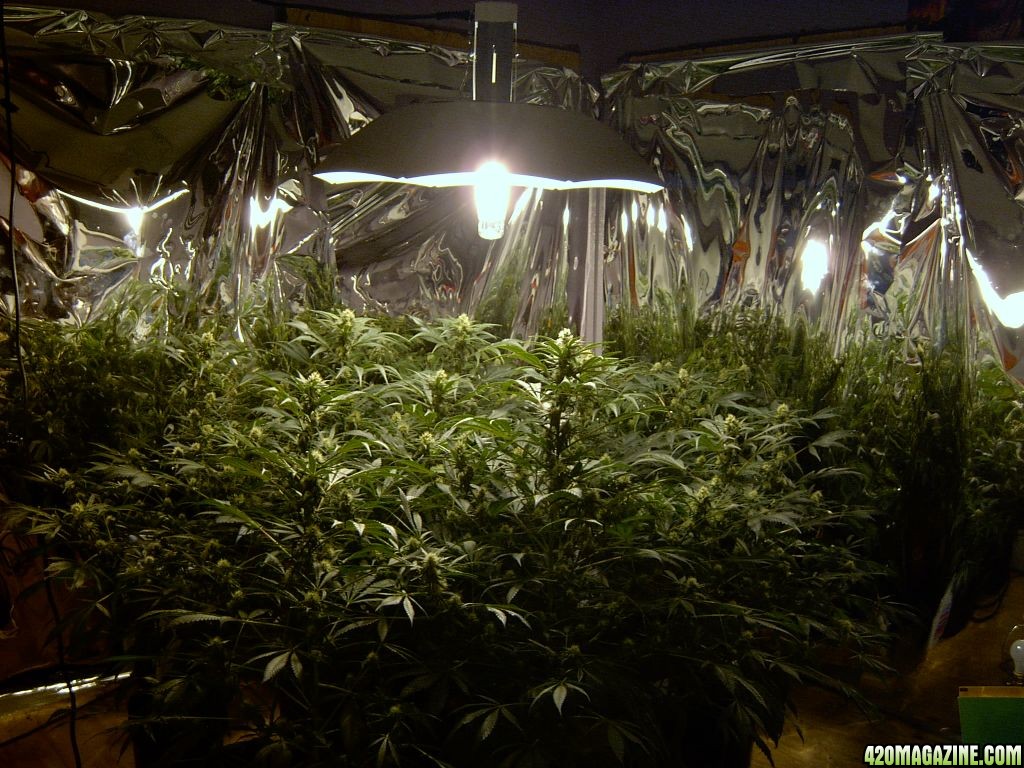Smokin Moose
Fallen Cannabis Warrior & Ex Moderator
Forty years of marijuana genetics from around the world
Dr. Atomic is a seed breeder with half a dozen valuable varieties of pot from the far reaches of the earth. His cannabis is surely some of the finest ever grown — phenomenal in both quality and high. The history behind these genuine strains is as amazing as the buds themselves!
What you see here is in my current seed line. This crop here, of six different strains, is probably the finest that I've ever grown.
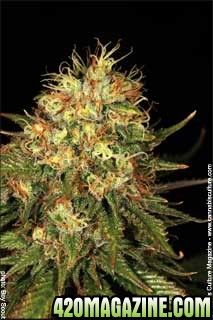
I acquired the original Northern Lights in 1988 from the seed banks in Amsterdam. I also got some Northern Lights from the northwest here in British Columbia, and over the last 18 years I've been perpetuating it and outcrossing it to other strains I like. It's not rocket science; I just observe and smoke. I believe that all pot is medicinal. That's my credo. I like to say that I'm a pot shaman first and merchant second, so for me it's about the experience and not the piles of dough. I know people out there think growers get rich, and that may be true for a few, but I think the best pot we have is the pot we grow for ourselves. My favorite strain has probably always been the pure Northern Lights. Potent, stocky and fat from its Afghani heritage, with certain improvements that give it a great long lasting high — it's got everything. I try to raise indicas that have shown to be good for pain, insomnia, and other physical aspects.
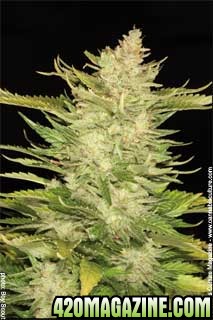
Sativas have much smaller buds, longer flowering, and lesser yield. The transformative experience of smoking true sativa begins with a pressure behind your eyes. When smoking true Thai, the top of your head is elevated, connected to the sixth sense. It has an influence of your thinking and mental outlook. Like original Haze, Thai can cause disturbing sensations for those who treat it trivially. It's for people looking for serious revelations, not fun seekers.
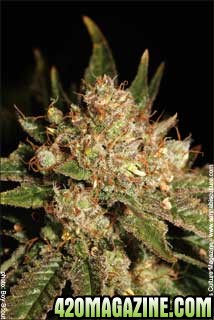
The Legendary Hash
In 1967 at 15 years of age, I was introduced to Lebanese hashish. It was a revelatory moment, when lights go on in your head. From that day, I dreamed of going to Lebanon. It took four years, but in 1971 I arrived in Beirut as a naïve hippy kid in search of this famous red hashish. I quickly met hash people and while hanging with Beirut hash dealers I learned of other desirable varieties available, like Moroccan. So I left Lebanon to stay in Ketama in the Rif Mountains of Morocco. There I met people who had been to Afghanistan, and that sounded incredible so a year later, in 1972, I went through Europe, overland to India and on to Afghanistan. (It was not an uncommon destination for young travelers until about 1974, when US/Russian manipulations overthrew the government and plunged the country into 30 years of war.)
When I arrived in Afghanistan I was immediately surrounded by Afghanis pulling out these huge hunks of black hash that cost just a couple of bucks, saying 'hashish, hashish, hashish'. So I went to the market and bought a bubbler for a buck, went back to my room, and got completely blazed. I got so high I forgot where I was and the language the people were speaking — no Afghan spoke English and I couldn't speak Afghani. Hash smoking, however, is communication easily understood everywhere!
My journey took me to Kandahar in southern Afghanistan. I have read opinions in great books by Laurence Cherniak and others that say the best hash came from Kandahar, and though it was good, I believe the finest hash in 1973 came from north of Mazari Sharif, near the borders of the old Soviet Union.
In the higher elevations, people take plants out of their gardens and hand-rub the hashish. This is the lineage of my Northern Lights. These Afghani strains were taken to Shid Tral in northern Pakistan; the hash there was good, but didn't compare to the Afghani hash so I went to Kashmir in northern-most India. In 1973 you could still go to Kashmir, and they had extraordinary hash and gorgeous scenery.
Next I went to Manali in northern India, and found outstanding hashish hand rubbed from plants grown at 3,000 meters (9,750 feet). Manali hash, smoked the day it is pressed, is the highest of highs I've ever experienced. After leaving Manali, I went to Nepal in 1973, where they had legal hash crops and quite a variety of temple balls and actual lengths of hash string twisted into hash rope! I eventually visited southern India but the hash there was not impressive. However, when I asked for ganja once in Kerala in southern India, they said 'Go out the back, outside the building'. There was a huge tree of cannabis. It was flowering and I was told to help myself. Not great bud, but what a scene! I estimated the plant at 18 feet tall.
Over the next 15 years I would return to Manali, Nepal, and Amsterdam to observe the evolving world of hashish. In 1972, Afghanistan, Pakistan, Kashmir, Lebanon, Nepal and Persia (Iran) were all beautiful exotic hashish paradises, where the people were stable, happy and at peace. After 1975, things deteriorated in Afghanistan and it became unsafe to travel there. The Russians invaded in 1979 after five years of subverting local Afghani rule. There hasn't been much good Afghani hash since. Much more opium is being produced in Afghanistan today than in 1973, while hashish production has fallen proportionately — a staggering reversal. Canadian and American soldiers there today are just the latest in a long history of attempted occupations of Afghanistan.
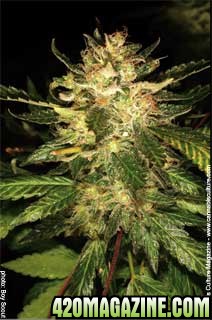
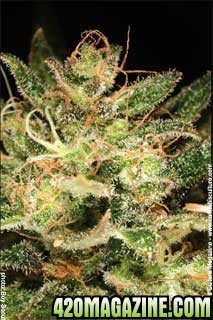
Nepal reversed hundreds of years of hashish tradition and prohibited pot and hash at the behest of the US government in 1973 when the Nixon Administration bribed the Monarch of Nepal to make cannabis illegal, which is having tragic repercussions in Nepal today. Lebanon broke out in a civil war in 1975, with invasions by Syria and Israel in the 1980's, forcing the hashish farmers of the famous Bekaa Valley into desperation. The US government organized the overthrow of the government of Persia (Iran) in 1953, installing the Shah Reza Pahlavi as a US satrapy. A nationalistic, anti-US movement guided by banned Islamic fundamentalists seized the government of Persia in early 1979. Since the Ayatollahs came into power, there has been little hashish out of the land where the term hashish was first coined and the culture first known. In 1973, Karachi, Pakistan was the port where more hashish was shipped from than any other port in the world but today there is a lot of military security. Hashish was made in the northern and western provinces of Pakistan, but the production of cannabis plumetted while production of opium greatly increased. The quality of Pakistani hashish has decreased in the last ten years and is not even a factor in the hashish markets.
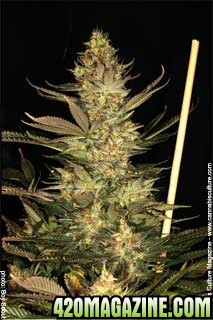
The Times, They Are a Changin'
Smugglers all over the world will tell you that from 1976 to 1985 it got much more difficult with each passing year to bring pot in from Hawaii, Columbia, Jamaica, Afghanistan, Pakistan, and Thailand.
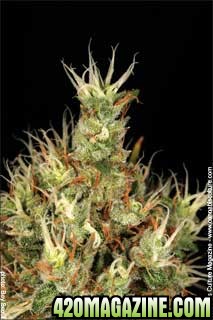
Mexican pot deteriorated from being some of the best in the world in 1970 to being schwag of the worst sort by 1990. And due to all the instability, the quality of hashish went way down. Overlapping this decline in hashish and marijuana from outside North America was a dramatic rise in indoor home growing, kick-started in 1980 when the metal halide bulb was introduced.

Howard Marks, the world's biggest hash smuggler, had a freighter of Thai Stick encounter engine trouble in 1983 off the coast of Vancouver Island. The entire freighter was successfully off-loaded before the Canadian coast guard found the boat at sea. For one year there was Thai stick, but I didn't ever see it again. So I went looking for it in Thailand in 1990. The cannabis I found that most closely resembled my Thai stick experiences was used for my Thai Lights cross. (Thai Stick is actually marijuana soaked in opium residue and left to dry in the sun, but I haven't seen it or heard of a sighting in many, many years.)
One day in 1987, I simply could not buy good pot or hash in Vancouver. In 20 years that had never happened but it continued for over two weeks. Other people noted the same shortage, and it led to me becoming a grower after 20 years of smoking. It happened when a friend offered me some pot and said, "It's indoor Skunk". For 20 years I had only smoked cannabis grown under the sun, but I tried the indoor weed and thought 'this is definitely for me'. My life changed.
I started with a 400-watt halide light bulb in a little alcove with 25 clones. It was only average pot, so I focused on learning indoor gardening and cultivating favorite strains I had enjoyed around the world throughout my life.

In 1988 I went to Amsterdam and bought seeds from the Sensi Seed Bank, Positronics, and others. I got the original Northern Lights #5, developed at the Cannabis Castle by Nevil Schoenmaker and Ben Dronkers. My current Northern Lights mothers are a result of generation-by-generation selection of males out of a certain batch and females out of another one.
In the eighteen years of indoor growing and breeding I collected more strains and tested them. I took my still beloved Northern Lights and outcrossed it to the strains that are now available today: Blueberry, Hash Plant, Sensi Star, Thai, and Nepalese. The Nepalese and Thai are backcrossed more frequently in the hope of stabilizing these very tall and stretchy plants to produce practical indoor versions with sativa attributes in the high. It's taken me years to get the right balances and I'm always working on improvement!

The Garden
These plants were left in darkness for three full days before being chopped down. Cannabis plants react to an extended absence of sun or light with the realization that frost/death is imminent, and pump out a lot of resin in a sort of panic. They know that their life is soon terminated so they try to attract pollen in a last gasp to get fertilized. I believe these last three days of resin production contain the most potent cannabinoids.
The plants were then chopped down whole and hung to dry for ten days to two weeks. At ten days, the smaller lower buds were taken off and processed. The huge tops dried for fourteen days, and were placed in paper bags. The buds were loosely and gently put in plastic bags, which were then twist-tied closed.

After a few more days, or until the buds looked petrified and the twigs seemed like dry sticks that would snap if bent, I removed them from the plastic bags. The buds were carefully trimmed and placed into glass mason jars. They continued to improve for up to six months in the jar. Few people can wait that long, but by using perpetual harvesting methods (i.e. grow cycles that overlap) you have the opportunity to produce steady personal supply.

Northern Lights is the core strain of my line. Over the years I've continually used the male offspring of each generation to pollinate other strains that I like. DJ Short's original Blueberry was one I first crossed in 1997. I admit many seed breeders now use DJ's Blueberry as breeding parents, and they do because it's a great cross. Blueberry is very pretty, potent, fruity and always imparts improvement in the offspring.
Two strains were acquired on my recent travels to Asia. In 2003, a Shiva holy man (sadhu) in Kathmandu gave me a Nepalese strain called Nepal Baba. He believed this Nepal Baba released the power of Shiva, the Hindu deity. He awarded me seeds from an exceptionally good strain which I brought back and did a double back-cross with the Northern Lights. It's a very spicy-tasting, uplifting experience. My other recent strain, the Thai, I brought over from Nong Khai province in northeast Thailand, which is traditionally where the best Thai pot comes from.
I grow in Sunshine Mix #4 blended with earthworm castings and bat guano. The plants vegetate in six-inch pots for approximately eight weeks so they are totally root bound. At 12 to 15 inches tall these plants were transferred into three to seven-gallon pots; the Northern Lights in the sevengallon. The flowering regime was Fox Farms' Tiger Bloom, Growth-Plus (an algae-sea weed extract) and Growzyme. The Growzyme aids in uptake of nutrients and keeps the root system free of fungus. The plants were soaked with nutrient solution and allowed to dry in a five-day cycle, and flowered for nine weeks using the fertilizer regime.
The temperature was 78ºF in the day (light) cycle and 64ºF in its night (no light) cycle. My room had 31 plants under five 1,000-watt Hortilux bulbs, which are made in Japan for horticulture purposes to deliver more blue spectrum light with the standard high pressure sodium orange/red light. A 540-CFM (cubic feet per minute) exhaust fan was on speed control 24 hours a day, adjusted to alter temperature. Six oscillating fans kept the air constantly moving, causing the surface of the leaves to gather more carbon dioxide on a continual basis.
I use two fresh air intakes. One intake draws outside air into the grow room by a 300-CFM inline fan. The other is a 260-CFM fan that brings air in from an adjacent room. During the night cycle, a small space heater is used, keeping the minimum temperature at 60ºF.
I added predator ladybugs into the grow room when the plants first went into flower. The underside of the leaves received a good foliar spray at least once a week. I have found this regimen effective in preventing any outbreak of insects or mites.
I've been on a quest all my adult life for the best genetics the world has to offer, and I bequeath it to those who crave an old-school hash and bud experience. If you want to bring your personal stash into the Atomic Age, I encourage you to obtain, cultivate and smoke the results of my 40 years of serious pot research.
by Dr. Atomic
Dr. Atomic is a seed breeder with half a dozen valuable varieties of pot from the far reaches of the earth. His cannabis is surely some of the finest ever grown — phenomenal in both quality and high. The history behind these genuine strains is as amazing as the buds themselves!
What you see here is in my current seed line. This crop here, of six different strains, is probably the finest that I've ever grown.

I acquired the original Northern Lights in 1988 from the seed banks in Amsterdam. I also got some Northern Lights from the northwest here in British Columbia, and over the last 18 years I've been perpetuating it and outcrossing it to other strains I like. It's not rocket science; I just observe and smoke. I believe that all pot is medicinal. That's my credo. I like to say that I'm a pot shaman first and merchant second, so for me it's about the experience and not the piles of dough. I know people out there think growers get rich, and that may be true for a few, but I think the best pot we have is the pot we grow for ourselves. My favorite strain has probably always been the pure Northern Lights. Potent, stocky and fat from its Afghani heritage, with certain improvements that give it a great long lasting high — it's got everything. I try to raise indicas that have shown to be good for pain, insomnia, and other physical aspects.

Sativas have much smaller buds, longer flowering, and lesser yield. The transformative experience of smoking true sativa begins with a pressure behind your eyes. When smoking true Thai, the top of your head is elevated, connected to the sixth sense. It has an influence of your thinking and mental outlook. Like original Haze, Thai can cause disturbing sensations for those who treat it trivially. It's for people looking for serious revelations, not fun seekers.

The Legendary Hash
In 1967 at 15 years of age, I was introduced to Lebanese hashish. It was a revelatory moment, when lights go on in your head. From that day, I dreamed of going to Lebanon. It took four years, but in 1971 I arrived in Beirut as a naïve hippy kid in search of this famous red hashish. I quickly met hash people and while hanging with Beirut hash dealers I learned of other desirable varieties available, like Moroccan. So I left Lebanon to stay in Ketama in the Rif Mountains of Morocco. There I met people who had been to Afghanistan, and that sounded incredible so a year later, in 1972, I went through Europe, overland to India and on to Afghanistan. (It was not an uncommon destination for young travelers until about 1974, when US/Russian manipulations overthrew the government and plunged the country into 30 years of war.)
When I arrived in Afghanistan I was immediately surrounded by Afghanis pulling out these huge hunks of black hash that cost just a couple of bucks, saying 'hashish, hashish, hashish'. So I went to the market and bought a bubbler for a buck, went back to my room, and got completely blazed. I got so high I forgot where I was and the language the people were speaking — no Afghan spoke English and I couldn't speak Afghani. Hash smoking, however, is communication easily understood everywhere!
My journey took me to Kandahar in southern Afghanistan. I have read opinions in great books by Laurence Cherniak and others that say the best hash came from Kandahar, and though it was good, I believe the finest hash in 1973 came from north of Mazari Sharif, near the borders of the old Soviet Union.
In the higher elevations, people take plants out of their gardens and hand-rub the hashish. This is the lineage of my Northern Lights. These Afghani strains were taken to Shid Tral in northern Pakistan; the hash there was good, but didn't compare to the Afghani hash so I went to Kashmir in northern-most India. In 1973 you could still go to Kashmir, and they had extraordinary hash and gorgeous scenery.
Next I went to Manali in northern India, and found outstanding hashish hand rubbed from plants grown at 3,000 meters (9,750 feet). Manali hash, smoked the day it is pressed, is the highest of highs I've ever experienced. After leaving Manali, I went to Nepal in 1973, where they had legal hash crops and quite a variety of temple balls and actual lengths of hash string twisted into hash rope! I eventually visited southern India but the hash there was not impressive. However, when I asked for ganja once in Kerala in southern India, they said 'Go out the back, outside the building'. There was a huge tree of cannabis. It was flowering and I was told to help myself. Not great bud, but what a scene! I estimated the plant at 18 feet tall.
Over the next 15 years I would return to Manali, Nepal, and Amsterdam to observe the evolving world of hashish. In 1972, Afghanistan, Pakistan, Kashmir, Lebanon, Nepal and Persia (Iran) were all beautiful exotic hashish paradises, where the people were stable, happy and at peace. After 1975, things deteriorated in Afghanistan and it became unsafe to travel there. The Russians invaded in 1979 after five years of subverting local Afghani rule. There hasn't been much good Afghani hash since. Much more opium is being produced in Afghanistan today than in 1973, while hashish production has fallen proportionately — a staggering reversal. Canadian and American soldiers there today are just the latest in a long history of attempted occupations of Afghanistan.


Nepal reversed hundreds of years of hashish tradition and prohibited pot and hash at the behest of the US government in 1973 when the Nixon Administration bribed the Monarch of Nepal to make cannabis illegal, which is having tragic repercussions in Nepal today. Lebanon broke out in a civil war in 1975, with invasions by Syria and Israel in the 1980's, forcing the hashish farmers of the famous Bekaa Valley into desperation. The US government organized the overthrow of the government of Persia (Iran) in 1953, installing the Shah Reza Pahlavi as a US satrapy. A nationalistic, anti-US movement guided by banned Islamic fundamentalists seized the government of Persia in early 1979. Since the Ayatollahs came into power, there has been little hashish out of the land where the term hashish was first coined and the culture first known. In 1973, Karachi, Pakistan was the port where more hashish was shipped from than any other port in the world but today there is a lot of military security. Hashish was made in the northern and western provinces of Pakistan, but the production of cannabis plumetted while production of opium greatly increased. The quality of Pakistani hashish has decreased in the last ten years and is not even a factor in the hashish markets.

The Times, They Are a Changin'
Smugglers all over the world will tell you that from 1976 to 1985 it got much more difficult with each passing year to bring pot in from Hawaii, Columbia, Jamaica, Afghanistan, Pakistan, and Thailand.

Mexican pot deteriorated from being some of the best in the world in 1970 to being schwag of the worst sort by 1990. And due to all the instability, the quality of hashish went way down. Overlapping this decline in hashish and marijuana from outside North America was a dramatic rise in indoor home growing, kick-started in 1980 when the metal halide bulb was introduced.

Howard Marks, the world's biggest hash smuggler, had a freighter of Thai Stick encounter engine trouble in 1983 off the coast of Vancouver Island. The entire freighter was successfully off-loaded before the Canadian coast guard found the boat at sea. For one year there was Thai stick, but I didn't ever see it again. So I went looking for it in Thailand in 1990. The cannabis I found that most closely resembled my Thai stick experiences was used for my Thai Lights cross. (Thai Stick is actually marijuana soaked in opium residue and left to dry in the sun, but I haven't seen it or heard of a sighting in many, many years.)
One day in 1987, I simply could not buy good pot or hash in Vancouver. In 20 years that had never happened but it continued for over two weeks. Other people noted the same shortage, and it led to me becoming a grower after 20 years of smoking. It happened when a friend offered me some pot and said, "It's indoor Skunk". For 20 years I had only smoked cannabis grown under the sun, but I tried the indoor weed and thought 'this is definitely for me'. My life changed.
I started with a 400-watt halide light bulb in a little alcove with 25 clones. It was only average pot, so I focused on learning indoor gardening and cultivating favorite strains I had enjoyed around the world throughout my life.

In 1988 I went to Amsterdam and bought seeds from the Sensi Seed Bank, Positronics, and others. I got the original Northern Lights #5, developed at the Cannabis Castle by Nevil Schoenmaker and Ben Dronkers. My current Northern Lights mothers are a result of generation-by-generation selection of males out of a certain batch and females out of another one.
In the eighteen years of indoor growing and breeding I collected more strains and tested them. I took my still beloved Northern Lights and outcrossed it to the strains that are now available today: Blueberry, Hash Plant, Sensi Star, Thai, and Nepalese. The Nepalese and Thai are backcrossed more frequently in the hope of stabilizing these very tall and stretchy plants to produce practical indoor versions with sativa attributes in the high. It's taken me years to get the right balances and I'm always working on improvement!

The Garden
These plants were left in darkness for three full days before being chopped down. Cannabis plants react to an extended absence of sun or light with the realization that frost/death is imminent, and pump out a lot of resin in a sort of panic. They know that their life is soon terminated so they try to attract pollen in a last gasp to get fertilized. I believe these last three days of resin production contain the most potent cannabinoids.
The plants were then chopped down whole and hung to dry for ten days to two weeks. At ten days, the smaller lower buds were taken off and processed. The huge tops dried for fourteen days, and were placed in paper bags. The buds were loosely and gently put in plastic bags, which were then twist-tied closed.

After a few more days, or until the buds looked petrified and the twigs seemed like dry sticks that would snap if bent, I removed them from the plastic bags. The buds were carefully trimmed and placed into glass mason jars. They continued to improve for up to six months in the jar. Few people can wait that long, but by using perpetual harvesting methods (i.e. grow cycles that overlap) you have the opportunity to produce steady personal supply.

Northern Lights is the core strain of my line. Over the years I've continually used the male offspring of each generation to pollinate other strains that I like. DJ Short's original Blueberry was one I first crossed in 1997. I admit many seed breeders now use DJ's Blueberry as breeding parents, and they do because it's a great cross. Blueberry is very pretty, potent, fruity and always imparts improvement in the offspring.
Two strains were acquired on my recent travels to Asia. In 2003, a Shiva holy man (sadhu) in Kathmandu gave me a Nepalese strain called Nepal Baba. He believed this Nepal Baba released the power of Shiva, the Hindu deity. He awarded me seeds from an exceptionally good strain which I brought back and did a double back-cross with the Northern Lights. It's a very spicy-tasting, uplifting experience. My other recent strain, the Thai, I brought over from Nong Khai province in northeast Thailand, which is traditionally where the best Thai pot comes from.
I grow in Sunshine Mix #4 blended with earthworm castings and bat guano. The plants vegetate in six-inch pots for approximately eight weeks so they are totally root bound. At 12 to 15 inches tall these plants were transferred into three to seven-gallon pots; the Northern Lights in the sevengallon. The flowering regime was Fox Farms' Tiger Bloom, Growth-Plus (an algae-sea weed extract) and Growzyme. The Growzyme aids in uptake of nutrients and keeps the root system free of fungus. The plants were soaked with nutrient solution and allowed to dry in a five-day cycle, and flowered for nine weeks using the fertilizer regime.
The temperature was 78ºF in the day (light) cycle and 64ºF in its night (no light) cycle. My room had 31 plants under five 1,000-watt Hortilux bulbs, which are made in Japan for horticulture purposes to deliver more blue spectrum light with the standard high pressure sodium orange/red light. A 540-CFM (cubic feet per minute) exhaust fan was on speed control 24 hours a day, adjusted to alter temperature. Six oscillating fans kept the air constantly moving, causing the surface of the leaves to gather more carbon dioxide on a continual basis.
I use two fresh air intakes. One intake draws outside air into the grow room by a 300-CFM inline fan. The other is a 260-CFM fan that brings air in from an adjacent room. During the night cycle, a small space heater is used, keeping the minimum temperature at 60ºF.
I added predator ladybugs into the grow room when the plants first went into flower. The underside of the leaves received a good foliar spray at least once a week. I have found this regimen effective in preventing any outbreak of insects or mites.
I've been on a quest all my adult life for the best genetics the world has to offer, and I bequeath it to those who crave an old-school hash and bud experience. If you want to bring your personal stash into the Atomic Age, I encourage you to obtain, cultivate and smoke the results of my 40 years of serious pot research.
by Dr. Atomic



